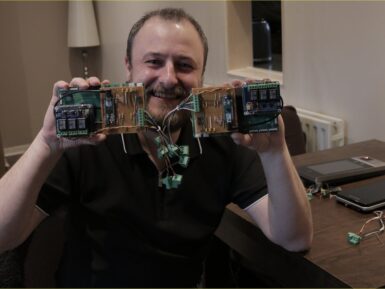
Arduino MKR ETH Shield
You may want to connect an Arduino MKR board with an Ethernet cable instead of using WiFi. An Ethernet connection can sometimes be stabler, faster, and more secure. To do this, plug in the Arduino MKR ETH shield.
Overview
Are you developing a project for an environment where wireless connections are unavailable or would be inefficient? The MKR ETH shield allows to have a wired Ethernet connection between your MKR board and your network or the Internet. This is particularly useful for devices located where either electromagnetic noise is a problem or there are special safety requirements.
Tech specs
| Connectivity | Ethernet |
| Connector | RJ45 Female |
| SPI SD Card Slot | Yes |
| Circuit Operating Voltage | 3.3 V |
| Compatibility | MKR boards |
Conformities
Resources for Safety and Products
Manufacturer Information
The production information includes the address and related details of the product manufacturer.
Arduino S.r.l.
Via Andrea Appiani, 25
Monza, MB, IT, 20900
https://www.arduino.cc/
Responsible Person in the EU
An EU-based economic operator who ensures the product's compliance with the required regulations.
Arduino S.r.l.
Via Andrea Appiani, 25
Monza, MB, IT, 20900
Phone: +39 0113157477
Email: support@arduino.cc
Documentation
OSH: Schematics
The Arduino MKR ETH Shield is open-source hardware! You can build your own board using the following files:
EAGLE FILES IN .ZIP SCHEMATICS IN .PDFLearn more
Get Inspired
trying to understand how to convert serial data to digital data onb arduino micro

Whether granting access to public transit or restricting unauthorized personnel in buildings, NFC card readers can be extremely useful. Although most might not consider how they work – and simply happy getting through a turnstile – there’s a lot going on behind the scenes. In his video, Daniel Raines shows off a pair of prototype access control units (ACUs) that he’s constructed. The two networked devices are each based on a Raspberry Pi Compute Module 4 along with an Arduino Micro that controls six relays to allow or deny entry, provide feedback, fire, and lock up. More details on the project can be found in Raines' clip below.








